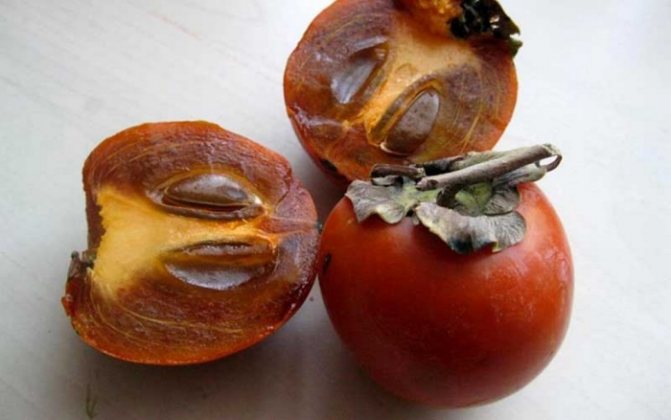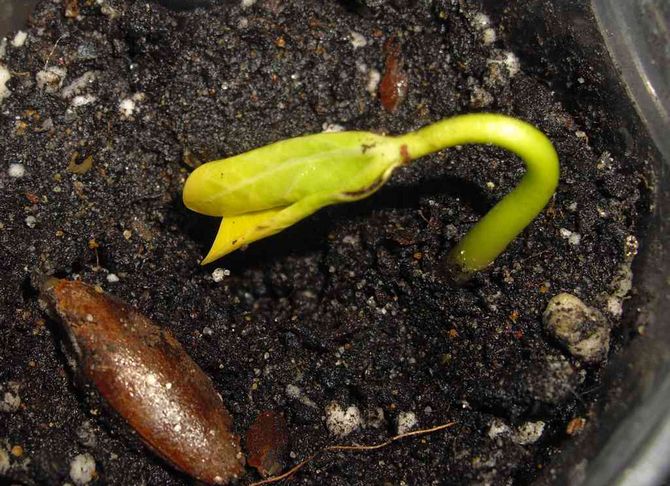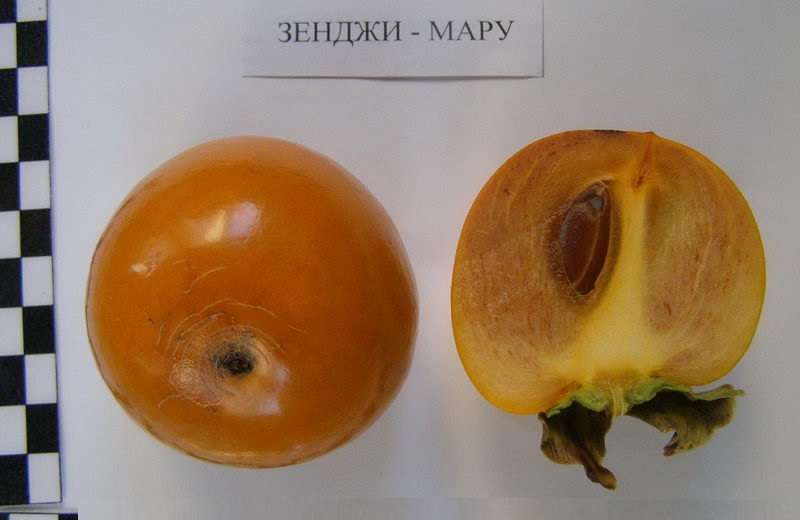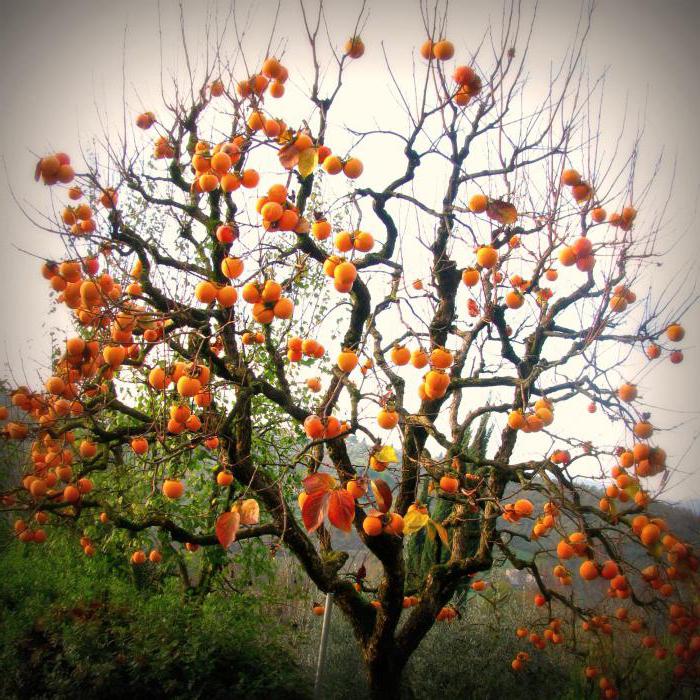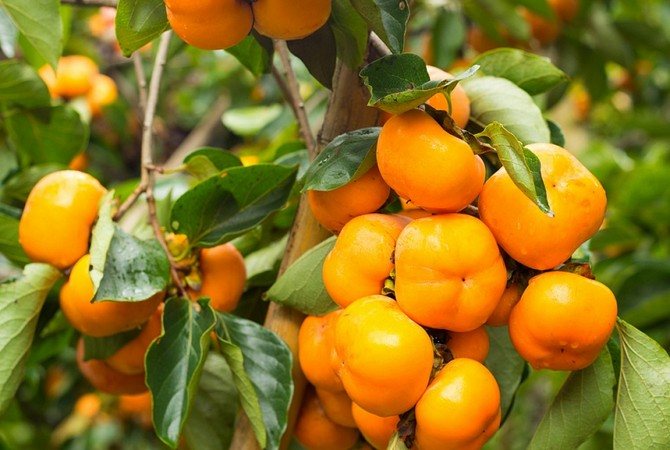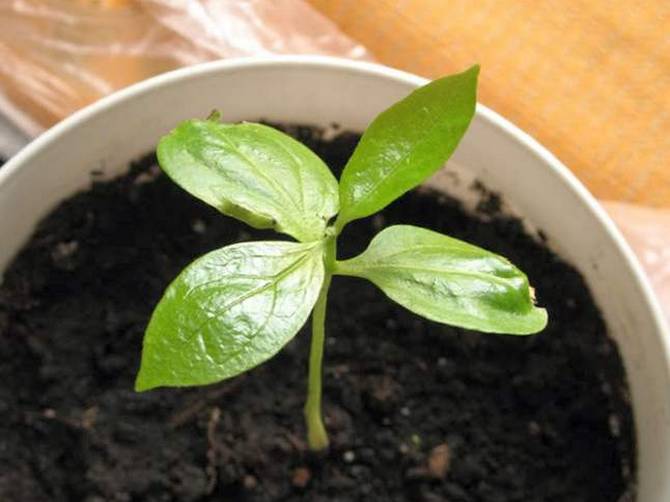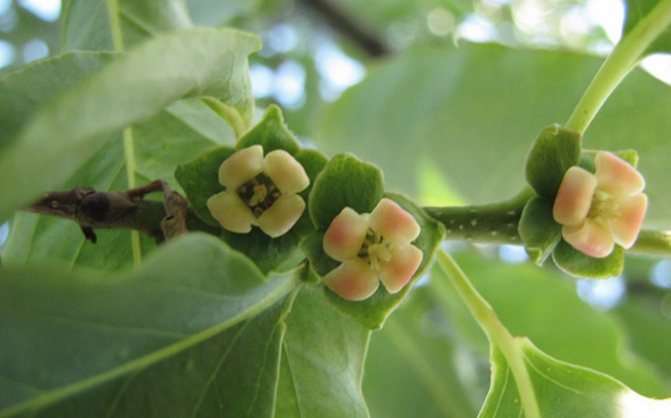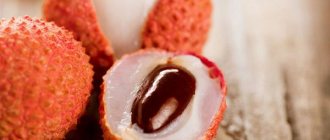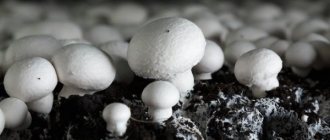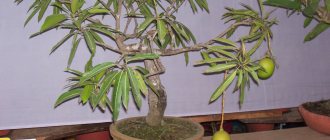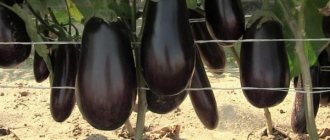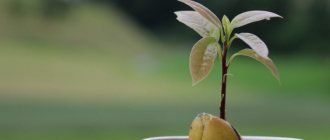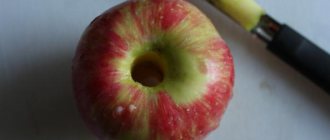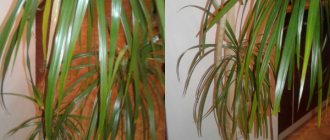The idea of growing an exotic or familiar fruit from the seed for Russians has certainly visited talented gardeners or novices in the field of agriculture more than once. Not only do you have the opportunity to enjoy your favorite vegetable delicacy for free, but the growing process itself is also of interest. Unfortunately, not all attempts end in success, but only a few, carried out according to important rules. In this material, we will tell you how to properly cultivate persimmons from seeds at home.

Growing persimmons from seeds at home
Fruit selection
Do not take pits from fruits with moldy sepals. A fungus has already settled on them.
Persimmons are often frozen for flavor enhancement. The bones in them die even after a short stay at sub-zero temperatures and become unsuitable for sowing.
You cannot take a bone from an unripe fruit. Unripe persimmons need to ripen - just like they do with tomatoes:
- The fruit is placed in a warm, dry place, for example, on a windowsill next to a radiator.
- Wait until the peel is cracked and the sepals are completely dry.
Then the bones can be removed. They should be heavy, full-bodied, fully ripe. To separate the weak, immature material, the bones are thrown into ordinary tap water. Floated ones are unsuitable for sowing.


Choosing the right seeds


Persimmon seeds without external defects
Before growing persimmons from seeds at home, you need to choose the right seeds. It is important to choose a ripe berry without external damage and mold. The signs of ripe persimmon are thin skin, juicy pulp, dry leaves.
Helpful hints:
To check the quality of the seeds, you need to put them in water for a short time. If the bone is on the surface, then such material will not be suitable for planting.
The most ideal option is overripe fruits that remain on the tree before the frost begins. But such persimmon is difficult to find on sale, because the presentation is lost.
Unripe berries must be placed in a warm place to ripen. The fruits are ready when the leaves dry out and the rind begins to crack. To eliminate bitterness, persimmons are often frozen. Such planting material is not suitable for growing. The stone will die at a low temperature and will not subsequently sprout.
Frost-resistant plant varieties are less whimsical to care for, and are also not afraid of pests. Such a seed will give strong sprouts for subsequent planting.... It is necessary to pick up several seeds and preferably different varieties. not all seeds are capable of germinating. 5 seeds are optimal for subsequent cultivation.
The most popular varieties of edible persimmon
Some of the most common varieties include:
Watch a video about the first fruiting of a persimmon grown from a stone.
Khachia. The fruits of this persimmon variety are large, they reach a weight of 300 grams. The second name of this species is "bull heart". The color of the fruit is bright red. The shape is conical. The fruit contains 18% sugar. The fruits are delicious and sweet. But they become such only after they are fully ripe.
Tamopan. This variety has the largest fruits, weighing 550 grams.You can eat them only after they are fully ripe.
Jiro. Fruits are rounded with grooves. Fruits are very sweet as they contain a lot of sugar. Jiro persimmon can be consumed even in an unripe form.
Planting persimmons in permanent soil
As the bush develops, it is necessary to pick it up. This procedure is aimed at the formation of a strong root system and can be carried out after several leaves have formed on the sprout. To transplant persimmons to a permanent place, you need to choose a pot of the optimal size. It should not be planted in a deep container, for "growth". It is recommended to use pots with a diameter of up to 10 cm and a capacity of up to 1 liter. After transferring to a new soil, the seedling is covered with glass. It is necessary to maintain the protective cover for 2 weeks, removing it daily to ventilate the soil.


Home-grown persimmon
As the seedling grows, it should be transferred to a large container. Most often, the procedure is carried out in early May, during which it is necessary to plant a bush in a pot with a capacity of up to 3 liters. With the onset of summer, the container can be taken out into an open space with abundant sunlight. Subsequently, the transplant is carried out as needed, when the rapidly developing root system becomes not enough space in the container.
At the request of the owner, the tree can also be planted in an open area. To do this, you need to select areas that are abundantly covered with sunlight. Avoid planting a bush in a draft. This measure allows you to protect fragile persimmon branches from breaking. It is recommended to place this crop near fences, houses and other buildings that reliably protect the plant from the winds.
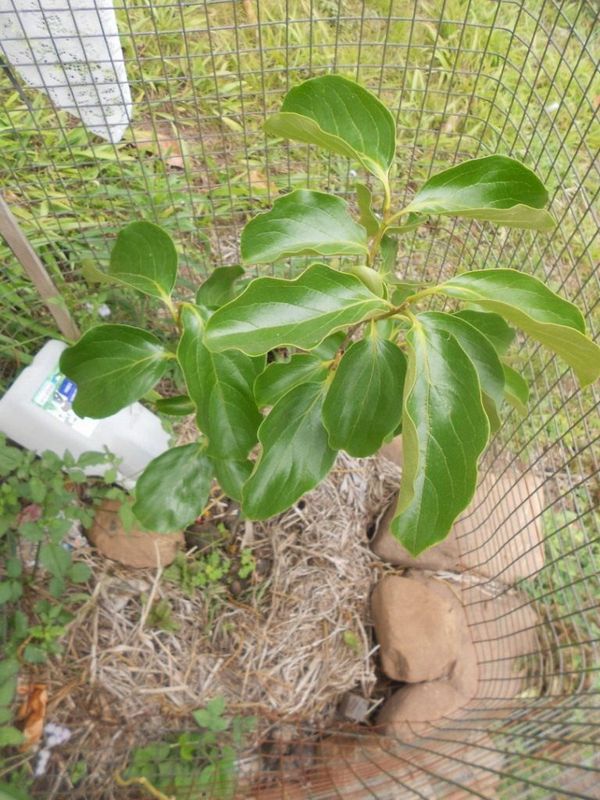

Persimmon planted in the ground
Regardless of the place where persimmons are grown, the first flowering can be observed after 5 years have passed since the day the seed was introduced into the ground and proper care. 7-8 months after the appearance of inflorescences on the crown, the first orange fruits are formed. When growing persimmons indoors, it is necessary to take the bush to an open space for pollination immediately after the flowers appear.
Preparing for landing
The soil for sowing persimmons should not be nutritious. You can use a 1: 1 mixture of sand and peat.
Usually, a substrate is used to grow persimmons at home:
- meadow soil 1;
- peat 0.5;
- river sand 0.5.
Two weeks before planting, the substrate can be spilled with the Baikal preparation to saturate with beneficial microorganisms.
The seeds need to be removed in the cold for a while. Stratification lasts 1-2 months at a temperature of +5 degrees. All this time, the bones are kept on the shelf of the refrigerator, not wrapped in polyethylene, since it must breathe.


Agrotechnics of homemade tomato tree - persimmons
Growing persimmons at home is associated with the creation of "tropical" conditions for the plant. It means:
- A potted plant needs a lot of diffused light, in spring and autumn with additional lighting for 2-3 hours. Persimmon cannot stand direct sunlight; on a clear summer day, the window should be covered with gauze.
- In summer, the plant loves fresh air, but no wind, shaded.
- Water the tree in small portions, without creating stagnation and dirt in the box.
- Daily spraying on the leaves is required.
- During the rest period, the tree sheds its leaves and can be stored at temperatures up to -15. Usually, +5 -10 degrees in a dark underground, with periodic moistening of a clod of earth, is enough.
- During the growing season, moderate feeding, replanting or renewal of the upper layer of the substrate are required.
Home care for a persimmon from a stone to obtain a fruitful tree is associated with maintaining a balance of stressful conditions with favorable ones. This is how trees are forced to bear fruit in conditions unusual for them. Limited doses of fertilizers do not allow the vegetative mass to grow, otherwise the roots will not cope.On the other hand, artificial supplementary lighting and the absence of a draft is comfortable for persimmons. Regular crown formation inhibits the growth of the ground part and helps the roots.
How to water persimmon is a special science. If the tree stands in a bright room with a high temperature, the leaves dry out. It is necessary to water the plant with warm water more often, but do not create dirt in which there is no air, the roots are suffocating. Moderation is needed in everything. Watering cannot replace daily spraying, creating fog in the crown. Spraying on the leaves is carried out several times a day in hot weather. To increase the humidity, place an aquarium, saucer or tray with pebbles and wet moss near.
How to grow persimmons
Growing conditions
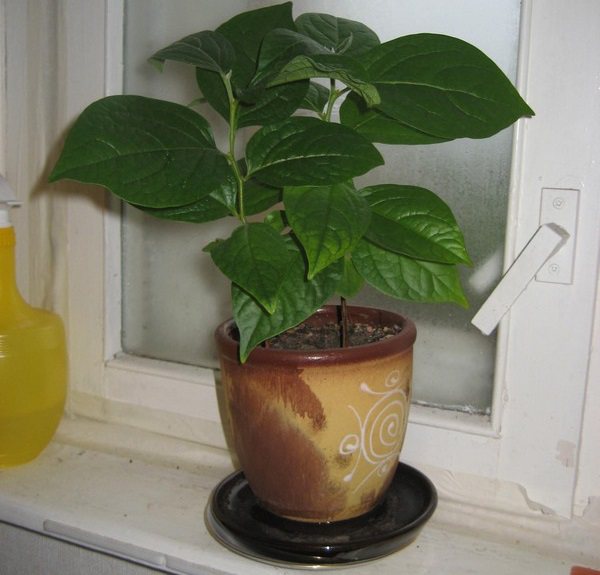

Conditions for growing persimmons differ depending on the stage of development (germinating seed, seedling, seedling, adult tree) and from the season.
At the initial stage, when the seed germinates, it should be in a warm and humid environment. Lighting does not matter, especially if germination takes place in the ground, and not on open material (any hygroscopic matter). Further, the illumination should be sufficient, but when the plant is transferred to a place with higher illumination (usually this is taking the pot out into the street in rather warm weather), it is necessary to accustom to the "big" light gradually: persimmons can get a light burn.
By the way, in the same way, you need to carefully bring the tree for wintering: with a sharp change in temperature, a very rapid defoliation can occur. Although the loss of foliage itself is not terrible, it occurs with the entry of the tree into the winter season, but it is still better to ensure that the transition period corresponds to the natural one.
Collection and storage of persimmon harvest
It is already possible to start harvesting the first crop in 4-5 years. Do not be upset if there is a lot of carrion under the trees. There will be less of it every year. The presence of a male tree will reduce the amount of carrion to a minimum. You can harvest the fruits from October to November. The main thing - do not tighten the collection until severe frosts
... With a plentiful harvest, you can put supports under the branches. Storage of persimmons grown outdoors is desirable in
cool place
... The storage area must be accessible in order to periodically check the condition of the fruit.
Persimmons can be frozen, dried - at the same time, they do not lose their vitamin value. The right approach to storage will help extend the season of persimmons and the time to enjoy this healthy fruit.
Planting persimmon seeds
Persimmon seeds are planted in February, March or July. They germinate best during this time.
The bone is removed from the refrigerator and kept at room temperature for 24 hours. Then it is wrapped in gauze or thin cotton cloth and immersed in a growth stimulator (Silk, Epin, Gumat) for the time specified in the instructions for the preparation.
Persimmon seeds are very hard. The shoot may not break through the peel. To facilitate germination, use a file, sharpening sharp edges and tips.
How to plant a persimmon from a stone:
- Remove the seed from the stimulant, rinse under the tap and dry for 2-3 hours at room temperature.
- Immerse in a medium-intensity potassium permanganate solution for 30 minutes for disinfection.
- Fill the bottom of the pot with a layer of drainage, then the substrate.
- Embed the bone in the ground horizontally to a depth of 2-3 cm.
- Drizzle with warm water.
- Cover the top of the pot with glass or plastic for a greenhouse effect.
- Remove the film and check the soil moisture twice a week, water if necessary.
The sprout will appear within a month. When the first two leaves are formed, the shelter is removed.
Care
In regions with a dry, hot climate, where there is little rainfall, additional watering is carried out. Persimmon is hard to tolerate overdried and flooded soils, in such conditions the seedling will quickly die.In hot weather, 2-3 times a month, the tree is watered abundantly in the evening.
Watering seedlings grown from seed at home is carried out more often than for specimens purchased from nurseries.
Pruning and shaping. Decorativeness
To increase the yield and growth of a strong, healthy tree, it is important to carry out formative pruning in 1-2 years. First of all, crooked, dry, damaged branches are removed, leaving strong, healthy 4-5 branches on the trunk, which will further form the skeleton of the tree. The next year, the main branches are cut so that their length does not exceed 1.2–1.5 m. Lateral branches, excess young shoots are cut with shears. When pruning branches, do not forget about the appearance of the tree and decorativeness.
Fertilizer
Top dressing of seedlings and adult trees is carried out 2-3 times. For the first time in the spring, when young shoots are formed, biofertilizers or a mineral complex for growth are introduced. The second time during flowering, phosphorus-potassium dressing is applied. For the third time in the fall, before freezing, compost, manure or preparations containing nitrogen.
The harvest
Depending on the variety and region of growth, the harvest is harvested from September to December. The berries are removed carefully so as not to break the branches, substituting a ladder. It is better for the fruits to ripen on the branches of a tree or to use the ripening method at home, but then the fruits will lose their taste and will be more tart.
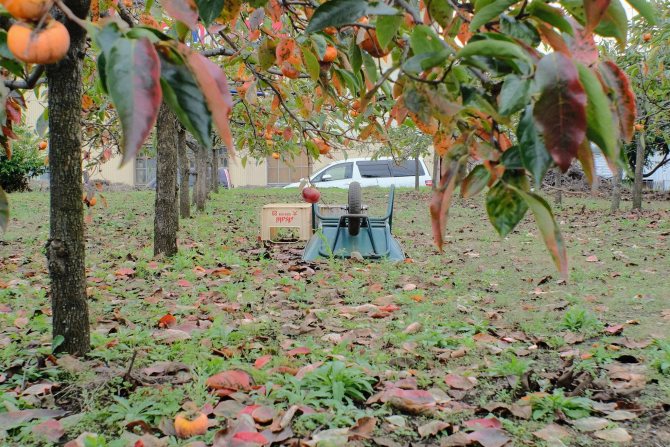

Harvesting
The harvested crop is stored in wooden boxes with sawdust, pouring each row at a temperature of + 1 ° C. In a dark room with an air humidity of 70–80%, no more.
The berries are processed by drying, freezing, boiling jam, compote or jam.
Growing persimmons requires patience, time, which will then delight the gardener with useful and unusually tasty berries. With good care and a properly selected variety of persimmons, a crop of up to 200 kg per tree per season is obtained.
Selection and preparation of planting material
To plant a persimmon on your own, you need to correctly choose a fruit with seeds suitable for planting. When selecting, take into account that the Sharon, Mandarinnaya varieties do not have seeds, therefore, it will not be possible to obtain planting material from them. The fruit, the seeds of which are suitable for planting, should be with sepals without signs of mold, well ripened. Frozen persimmon seeds, as a rule, also sprout.
If the berry brought home is solid, it is placed in a warm place for several days. When the pulp of the persimmon becomes very soft, cut it, remove the seeds, then prepare them for planting in the following sequence:
- Rinse with warm water, thoroughly removing pulp fibers.
- For 2 days, dipped in a light pink solution of potassium permanganate for disinfection. Pop-up instances are thrown away.


From seed to first harvest - Gently sand the edge of each seed with sandpaper so that they hatch faster.
- Prepare a solution of aloe juice (5 ml per 100 ml of water) or a growth stimulator (Immunocytophyte, Zircon, HB-101, Epin) according to the instructions.
- A cotton cloth or gauze is rolled several times and moistened abundantly in the resulting solution.
- The bones are placed between layers of cloth and placed in a cellophane bag.
- The bag is tied so that air remains in it, and placed to the radiator. After 7-10 days, the seeds should hatch.
You can germinate a persimmon seed in a simpler way by preparing a pot with a diameter of 10-12 cm and filling it with a mixture of garden soil, humus, peat and sand. See instructions in the picture.
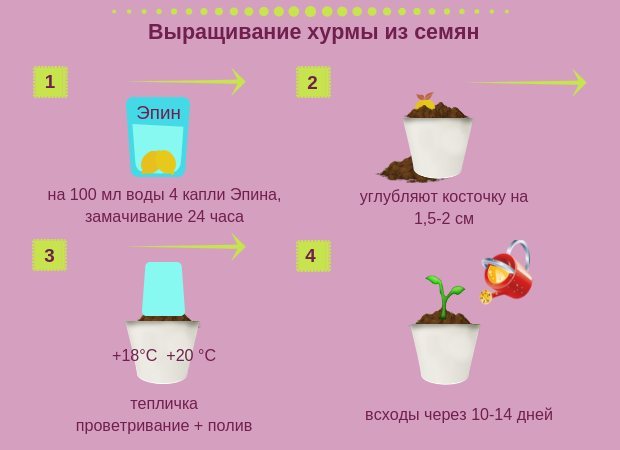

Growing instructions
The seed soaked in potassium permanganate or Epin is buried 1.5 cm into the previously watered soil, sprinkled with loose earth on top. The planting is covered with a plastic bag or glass, placed in a warm, bright place. A sprout should appear in 10-14 days.
Why is it useful to grow such a fruit crop
Persimmon wins in comparison with other fruits, both in nutritional aspect and in terms of external beauty throughout the whole year. First, a beautiful flowering, then luscious green foliage, which in autumn is replaced by various shades of yellow and red. And after the leaves fall off, the tree is ready to give its fruits, which stay on the trees for 1.5-2 months. At the same time, the taste characteristics of the product are preserved. Persimmons are good both fresh and dried. From persimmon, delicious confitures and syrups, jellies and marmalade are obtained.
(read more ...) :: (at the beginning of the article)
Table of Contents :: Search
Unfortunately, errors are periodically encountered in articles, they are corrected, articles are supplemented, developed, new ones are being prepared. Subscribe to the news to stay informed.
If something is not clear, be sure to ask! Ask a Question. Discussion of the article.
More articles
Blackleg. Rotting, softening of the tissue of the stem (trunk). Signs, with ... Black leg - rots, the stem softens. How to identify a disease and cure ...
Ziziphus - reproduction, care, fertilization, soil fertilization. Agrotechnologists ... Ziziphus - How to prepare soil, multiply, fertilize, feed. How does it endure ...
Knitting. Fern leaves. Openwork dolls. Drawings. Patterns ... How to knit the following patterns: Fern leaves. Openwork dolls. Detailed and ...
Knitting. Ways, methods of a set of loops. How to put on loops? ... Knitting - Overview of ways to set loops ...
Growing marjoram - planting tips.
Persimmon care
The main thing when growing persimmons is the correct microclimate. The tree at home needs to create tropical conditions: to provide a lot of diffused light, in the spring and autumn to illuminate for 2-3 hours of luminescence with a lamp.
You are wondering where to put a persimmon from a seed in a pot - the plant cannot stand the bright sun and suffers from burns. In summer, you will have to shade it with gauze on the south window. A young seedling is placed on the western or eastern windowsill. There he will grow more confidently.
In late autumn, the persimmon sheds its leaves and falls into a dormant state. At this time, she needs a lower temperature and the most modest watering. In winter, the plant is kept at a temperature not lower than +10.
In the summer, persimmons are transferred to a warm, bright room without drafts. You can put it on the balcony or transport it to the dacha.
Watering
Persimmons need constant watering and spraying. In summer, plants on the south window or balcony are watered often, but in small portions, so that there is no stagnation of water and the earth does not turn into mud. The leaves are sprayed daily with water from a spray bottle, creating a fog in the crown.
Top dressing
For a fruit tree growing in a room, fertilizing is vital. You just need to be careful about nitrogen. In nature, he goes to the development of new branches and leaves. In indoor conditions, where only compact plants can survive, vigorous growth is undesirable.
Phosphorus is required only during flowering and fruit setting, potassium - in the fall, to ripen the bark for winter. Thus, the macronutrients (nitrogen, phosphorus and potassium) in a persimmon pot should only be present in modest amounts.
Persimmon does not like organic matter. You don't need to add humus to the pot, much less manure or bird droppings. There are enough humates contained in a liquid dressing of the Ideal type.
The focus is on trace elements that make the berries sweeter and the plants resistant to disease. Liquid complex fertilizers containing trace elements and humates are suitable for persimmons. They increase the immunity of plants, which is very important, since fruit trees at home always suffer from stress.
In the warm season, the tree is fertilized once or twice a month, in winter it is not fed.
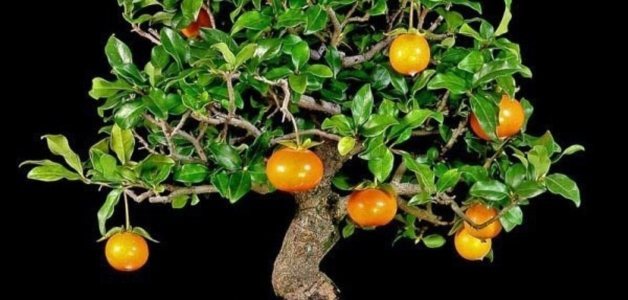

Transfer
In its original capacity, the seedling can grow up to 3 months. But it develops quickly and fills the container with roots. In such cases, a transshipment is made by moving the plant into a pot with a large diameter of 3-4 cm.
A sprout that has reached a length of 0.5 m is kept in a pot with a volume of several liters, where there will be room for the development of roots. When the height of the plant reaches 0.8 cm, the top must be removed so that the growth moves to the side branches.
A young seedling is transplanted annually in the spring. An adult plant is transplanted every 3 years. An increasingly voluminous container is chosen for transplantation. It is better to plant a tree 1.5 m high in open ground.
During cultivation in the room, excess twigs are removed from the plant, forming a beautiful compact crown. The best option for persimmons is a ball with a short stem. To create it, the growth of the tree is stopped at the desired height, removing the top, and then limiting the growth of lateral shoots that begin to develop rapidly, forming a spherical crown.
How to plant Persimmon outdoors
Since persimmon in size can reach up to 10 meters in height, seedlings should be planted at a distance of at least 4 meters from each other.
It is advisable to drive a planting stake next to each seedling and tie a persimmon to it.
The root system of the tree should freely enter the planting hole. Provided that the soil is fertile, permeable to moisture and air, a large pit is not needed. Here it is worth considering the condition of the soil. If the ground is dry and stony, you need to dig a bigger hole and fill it with good soil. It is categorically impossible to deepen the root collar on clay and heavy soil.
The ground around the seedling should not be trampled down - you can add soil after subsidence and water it abundantly. For convenience, it is advisable to put a free tag on the seedling indicating the variety and other indicators.
In the spring, a persimmon seedling is watered a couple of times with an interval of 2 weeks with root formation stimulants (they should be different, for example, the first time Kornevin, and the second time - a tablespoon of bee honey diluted in a bucket of rainwater).
One male plant is sufficient for eight females.
Persimmon is a moisture-loving tree, but do not get carried away with excessive watering, especially in autumn. The shoots should be ripe for winter.
When planting a seedling, you must not fertilize the ground. This can provoke intense growth, which can lead to the fact that the shoots do not have time to ripen by winter.
At the end of summer, potash fertilizers can be given for better ripening of the shoots, and you can fully fertilize after the start of fruiting.
Harvesting
The domestic persimmon tree, which was grown according to agrotechnical rules, pleases with tasty fruits after at least 5 years. The crop does not bear fruit in the first years of the growing season.
To speed up the fruit set in 2-3 years, it is better to vaccinate.
The plant begins to bloom in May, the fruits are formed in late autumn or early winter.


How to care for a persimmon tree
Sanitary pruning of a grown persimmon tree is essential... The main thing is to remove sick, broken, interfering branches and branches growing inside the crown. Young plants are cut at a height of 80-90 cm from the root collar. From the lateral shoots that appear, 4-5 skeletal branches are formed, the lower of which should be at a height of 50-60 cm from the root collar. In the next season, new skeletal branches are cut to 35-40 cm.
During the fruiting period, persimmons should not be heavily trimmed.
Pruning should stimulate the formation of a sufficient number of new annual shoots on which fruit is formed. Sanitary pruning of persimmons is carried out annually, and anti-aging pruning begins when shoot growth is noticeably reduced. In the year of anti-aging pruning, the tree usually does not bear fruit. Anti-aging pruning should also be done on older trees. While persimmons have practically no diseases, there is no need to process them for medicinal purposes. Persimmons are most susceptible to beetle larvae.If a young persimmon seedling of the first year of life does not have time to ripen the wood, it can pinch the growth point in early August and feed it with potash fertilizers. When the first frost appears and leaves fall, you can cover the weakest or not frost-resistant young plants... The shelter should protect from the wind, reflect the sun's rays, protect from rodents. Good insulation materials are Spanbond (lutrasil, agrofibre), cardboard, paper, natural light fabric, reeds, corn stalks.
Will the persimmon bear fruit from the stone?
At home, persimmons are grown for interior purposes, and not for harvesting. However, the tree is naturally fertile and capable of delighting with juicy orange berries even in an apartment. A five to six year old bush begins to bloom, and then there is a chance to feast on berries.
For growing at home in order to obtain fruits, it is better to take self-pollinated varieties. Suitable for apartment maintenance:
- Zenjiru;
- Hyakume;
- Khachia;
- Jiro.


Persimmon. Growing technologies. Planting, reproduction, grafting, watering, care
How to plant and grow persimmons. We propagate, plant, water the southern fruit, take care of it. (10+)
Agricultural machinery of southern fruit - persimmons
‘);
Table of Contents :: Search
Probably, each of you, if you have not tried it, then certainly saw the bright orange juicy fruits of persimmon on store shelves in late autumn and early winter. Today, gardeners have bred about 300 species of this winter fruit, but among such a huge variety, only three types of persimmon are most popular:
- eastern, or Japanese;
- Caucasian;
- virginian.
The agricultural technology of this culture is quite simple, and even a novice gardener - an amateur - can do it. In our latitudes, persimmons need to be grown in a tub, since they need to be harvested in winter. Therefore, you need to choose small varieties for growing. Persimmon for the summer can be taken out on the street, but you can generally grow at home (not to take out).
Where and how does persimmon grow?
In fact, there is no secret here. This large orange berry started growing in China. The oldest persimmon trees found there are about 500 years old. Then they began to actively grow it in Japan. And relatively recently (in the nineteenth century) it has become popular with us. Now persimmon trees grow in Europe, America, as well as in the Crimea and the Caucasus.


How does a persimmon tree grow in the garden?
Persimmon is a relatively small tree and very decorative in terms of its bright dark green or red (before falling off) leaves. The berries themselves are large and fleshy, with sweet pulp and an unforgettable aroma similar to the smell of apricot.
Persimmon grafting
The common persimmon is a monoecious plant, that is, there are male and female flowers on the same tree. But there are also dioecious species that have male and female specimens. It is not known which plant is formed from the seed: male or female. The male will not bear fruit.
Even if the tree is female, the quality of the fruit can be very poor. When propagated by seeds, persimmon gives great variability in the offspring. A tree with tasteless and even bitter fruits can grow from an ordinary bone. Therefore, the main method of propagation of persimmons, from which it is planned to harvest, is grafting.
A persimmon seedling, which has developed from a seed sown with your own hands, can be used as a stock by grafting on it a cutting of an exotic variety brought from southern countries.
You can vaccinate:
- budding;
- copulation - a handle.
Budding is carried out in spring, summer and autumn, during the growing season of the stock. An incision in the bark is made close to the surface of the soil and eyes are implanted from the middle part of the cutting. April budding gives especially good results. This month, the sap begins to move in the tree and the peephole quickly takes root.
Copulation is carried out in the following ways:
- cleft;
- butt;
- simple copulation;
- English copulation;
- vaccination with Geisfuss.
The cuttings are planted in winter and spring.The seedling itself can be used as a cutting, planting it on a dwarf stock to get a compact tree that grows freely in the room and does not take up much space.
Dwarf persimmon rootstock - Texas low-growing persimmon. The plant is native to Texas and New Mexico.
Experienced gardeners use the method of insertion, grafting onto a weakly growing stock the forms "Baby" and "Little Red Riding Hood", which have the ability to reduce the growth of the part grafted above. Such a house tree is made up of three different plants or even four if a pollinator variety is grafted into the crown.
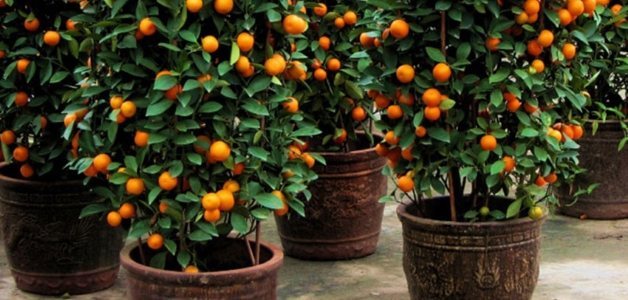

How to properly propagate persimmon
There are two options for propagating persimmons:
Seed propagation does not impart maternal properties. For sowing, seeds of a mature fruit are taken, which must be sown immediately. For sowing, the pot is filled with an earthen mixture of turf, leafy soil and sand. Then the pot needs to be watered and placed in the basement for 3 months. In this case, the temperature regime should be close to the mark of 3-5 grams. C. After the expiration of the term, in late February - early March, the pots are transferred to a warmer room. After the appearance of one or two true leaves, the seedlings are cropped into pots with a diameter of 7-9 cm, keeping an earthen lump. As soon as the seedlings get used to the new place, they can already be transported to a lighted place.
You can read about grafting technologies in the article: 'How to Succeed in Grafting Trees'.
The benefits of the fruit


Persimmon not only has an excellent taste, but also has a number of useful qualities. This makes it even more attractive to gardeners. What is useful in persimmon? So, the fruits of persimmon:
- contain a large amount of antioxidants, improve performance and mood;
- useful for those who like to diet, sweet berry contains few calories, but perfectly satisfies hunger;
- perfectly remove salts and are a diuretic product;
- normalize a person's blood pressure;
- useful in diseases such as tuberculosis, anemia, thyroid disease;
- contain such useful substances as magnesium, iron, vitamin A;
- protect the body from cancer, especially the respiratory system;
- are able to speed up wound healing if you apply the pulp to the affected area;
- strengthen human immunity - by eating persimmon fruits in winter, we give the body additional strength and support in a dangerous period.
As you can see, persimmon has a huge number of beneficial properties that affect the functioning of the body in all areas. Grow it, and your family will very soon feel the beneficial effects of this berry.
All stages of the operation
Inventory


To inoculate persimmons using the split method, you will need:
- garden pitch;
- sharp knife;
- secateurs;
- insulating tape;
- screwdriver or wooden wedge.
For grafting with a kidney (budding), you need:
- budding knife;
- secateurs;
- garden pitch;
- polyethylene film;
- insulating tape.
Sequencing
For a similar plant
The grafting process differs only in methods - either by the splitting method, or by the kidney (budding).
- When using the splitting method, the stock is cut, cleaned of dirt or bark. It is desirable that the scion and rootstock be approximately the same thickness, but this is not a prerequisite.
- Next, the scion is split with a knife and a wooden spacer or screwdriver is inserted into it.
- The rootstock is cleaned of bark and cut in the form of a wedge. The cut length should be 3-4 times the diameter of the shoot.
- The prepared stalk is inserted with a wedge into the rootstock split so that their layers are connected.
- The vaccination site is wound with electrical tape or any other tightly stretched material that does not stretch well.
- Slices of wood are coated with garden pitch.
Attention!
It is important not to touch the bare wood with your hands, as this can lead to infection of the sections.
The budding method is somewhat more complicated. and requires certain skills.
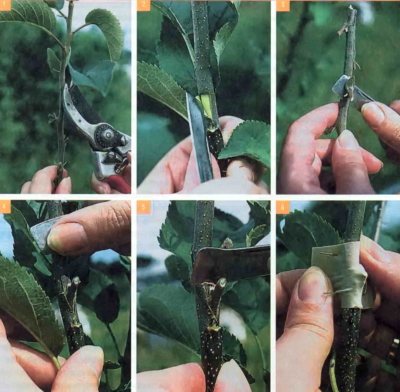

- At the planned vaccination site, all unnecessary interfering shoots and side branches are removed.The bark is cleared of dust and sand.
- At the site of the planned vaccination, a T-shaped incision is made in the bark. It is important not to touch the wood and only violate the integrity of the bark itself.
- With a rounding knife, cut out an eye 3-4 cm in length from the handle, capturing the bark. The neckline should be elliptical.
- The cut out part is inserted into the formed pocket of the cut on the scion until the eye is in the middle of the vertical cut.
- The upper part of the cut kidney shield protruding from the incision is cut off.
- The shield is wound either with electrical tape or with a special grafting tape, using a criss-cross winding, leaving the kidney open.
To another culture
Grafting on other plants by technique is no different from grafting with a homogeneous stock and scion. It is important to remember that the result of grafting on other trees can be significantly worse than grafting seedlings on plants of the same species.
Optimal varieties for cultivation
A feature of growing persimmon from a stone is that only certain plant varieties are used for this purpose. There are more than 200 varieties of this fruit, which are subdivided into categories of yield, ripening time, taste. At home, the culture can be grown from the following species:
- "Kinglet";
- "Meader";
- "Rossiyanka";
- "Nikitskaya burgundy", etc.
Persimmon variety "Korolek" is a tall tree, similar in shape to an apple tree. Its fruits can be of various shapes, from spherical to heart-shaped. A common feature for all fruits is sweet, no tinge of viscosity, taste and dark color of the flesh. But this characteristic is characteristic only of ripe fruits. When eating unripe persimmons, a tart, bitter aftertaste is observed, which is explained by the high content of tannin. This component completely disappears at the end of ripening, by October.
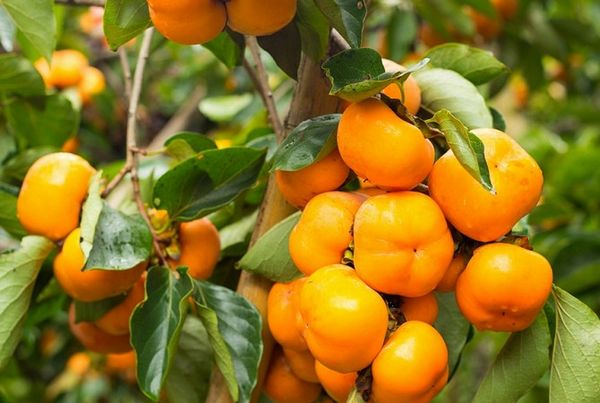

Cultivation of the variety "Korolek"
In the same period, the variety "Mider" ripens. This species is characterized by the formation of medium-sized fruits, slightly flattened at the base. Fully ripe fruits have a sweet taste, completely devoid of astringency and accompanied by a delicate aroma. They easily come off the branch, but do not fall off. "Meader" refers to frost-resistant crops and easily tolerates low temperatures, down to -30 ° C.
Derived from "Midera" is the persimmon variety "Rossiyanka". Despite the small number of seeds, it is often used to grow new crops. Differs in small rounded yellow-orange fruits. "Rossiyanka" refers to constant crops, which in the solid state are accompanied by a tart taste. To make it usable, you need to leave it to ripen for a while. Ripe fruits are distinguished by a dense jelly-like consistency, have a sweet taste and delicate aroma.
A popular variety used for growing persimmons from seeds at home is Nikitskaya Burgundy. This species is a tree of medium height, on the crown of which large fruits of a rich orange color are formed. Ripe fruits have a very sweet taste. The yield is annual and increases from year to year, which is why up to 20 kg of fruit can be obtained already in the 7th year of growth. The persimmon variety "Nikitskaya bordovaya" is distinguished by high frost resistance, due to which it successfully grows in the conditions of the Northern Black Sea region.
Persimmon types
There are countless types of persimmon - according to various sources, there are from 200 to 500.
In addition, breeders are constantly working on the development of new varieties of persimmon.
So, such persimmon is often found (when you click on the picture, it increases!):
Common persimmon (Caucasian - Diospyros Lotus) - differs in small fruits, only 1-2 cm in diameter, sweet and juicy, but not devoid of astringency - it disappears if the fruits are dried or held in the frost.The height of the Caucasian persimmon tree reaches 15-30m. As the tree ages, the bark begins to crumble. It blooms in the summer months (June-July) with small greenish flowers. The leaves of the tree are shiny, leathery, up to 15 cm long and 6 cm wide. The shape is oval, with a pointed end.
Eastern persimmon (Diospyros Kaki), also known as Chinese persimmon, Japanese persimmon, "Kinglet". It has yellow fleshy fruits, sometimes reaching a weight of 500 g!
What is the difference between grafting a plant at home and outdoors?
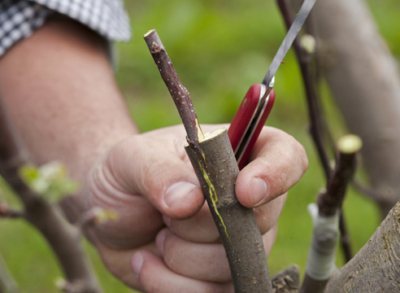

Grafting persimmons growing in home or greenhouse conditions differs little from that of garden street plants.
Both the seedling and the scion must be of the same persimmon type: garden to garden, indoor or greenhouse - to the same.
An imbalance between the scion and rootstock will result in uneven bark growth in the grafted branch or bud, and the rootstock may not be able to cope with the scion's demands for nutrients and water.
Purpose of vaccination


Grafting is a method of propagation of cultivated plants using only one cuttings or buds of the resulting specimen (scion) to another plant (stock). This allows you not to waste time and energy on growing plants from seeds and seeds, and also not to spend money on buying seedlings.
Experts believe that grafting persimmons is a more effective means of propagation than planting seedlings. In addition, several grafts can be planted on one rootstock and different varieties can be obtained on the same tree.

